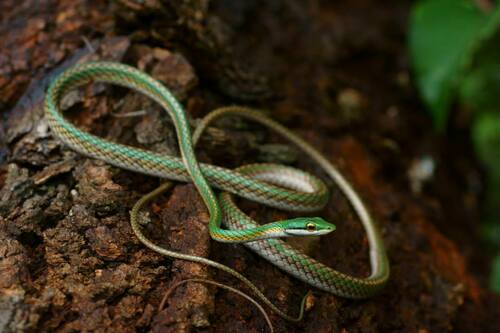
Parrot Snake
The parrot snake, Leptophis ahaetulla, dazzles with its emerald sheen and agile leaps through the rainforest canopy. Its keen vision and quick reflexes make it a formidable diurnal predator, playing a vital role in controlling small vertebrate populations. A true arboreal acrobat, it thrives in lush tropical habitats.
7-8 years
Lifespan
Length: 1.7272 m
Size
Gold, Green
Color
Low
Aggression
Least Concern
Conservation Status
Stable
Population Trend
Characteristics
Leptophis ahaetulla, known as the parrot snake, is a slender, arboreal species found in Central and South America. It features a striking emerald green coloration with a long, pointed head and large eyes, adapted for hunting in dense foliage. This diurnal snake primarily preys on small birds and lizards.
Distribution Range of the Parrot Snake
Leptophis ahaetulla, commonly known as the Parrot Snake, is native to the Neotropical regions of Central and South America. It is primarily found in countries including Mexico, Guatemala, Belize, Honduras, Nicaragua, Costa Rica, Panama, Colombia, Venezuela, Trinidad and Tobago, Guyana, Suriname, French Guiana, Brazil, Ecuador, Peru, and Bolivia.
Parrot Snake's Habitat
Environmental Conditions
The Parrot Snake inhabits a variety of environments, predominantly in tropical and subtropical forests. It is commonly found in humid lowland forests, rainforests, and occasionally in dry forests. The species thrives in areas with dense vegetation, which provide ample cover and hunting grounds.
Ecological Niche
Leptophis ahaetulla is primarily arboreal, often found in trees and shrubs. It plays a role as both predator and prey within its ecosystem. As a diurnal snake, it actively hunts during the day, preying on small vertebrates such as frogs, lizards, and occasionally birds. Its slender body and green coloration provide camouflage among the foliage, aiding in both hunting and evasion from predators.
Copyright @ Nature Style Limited. All Rights Reserved.
 English
English